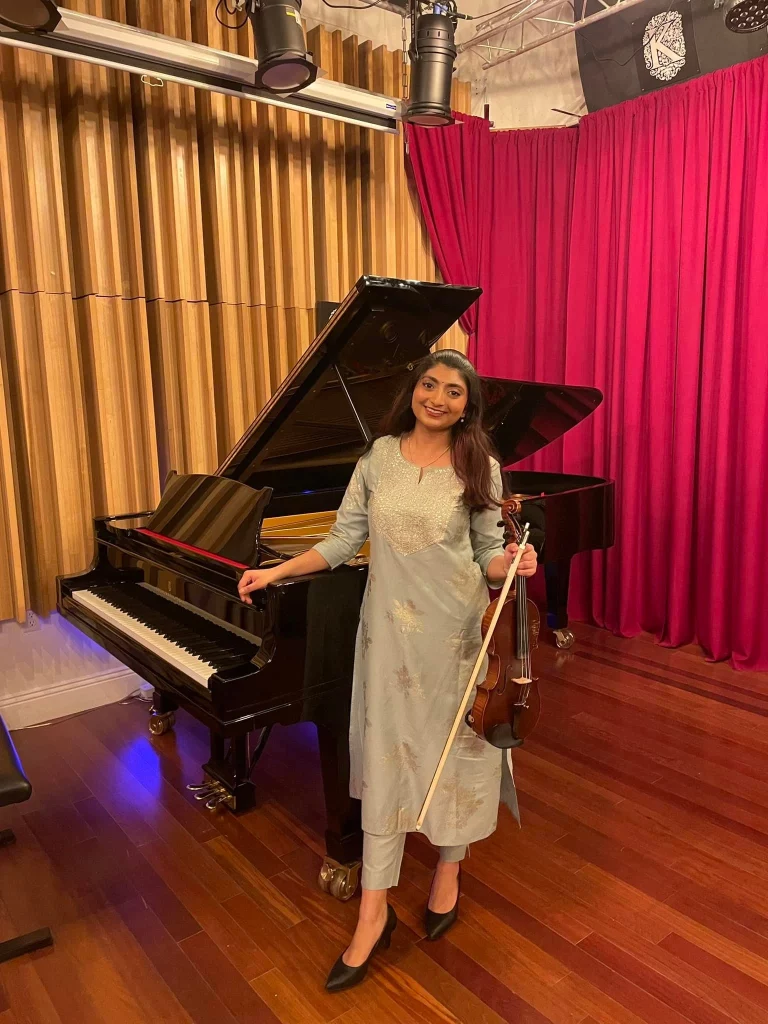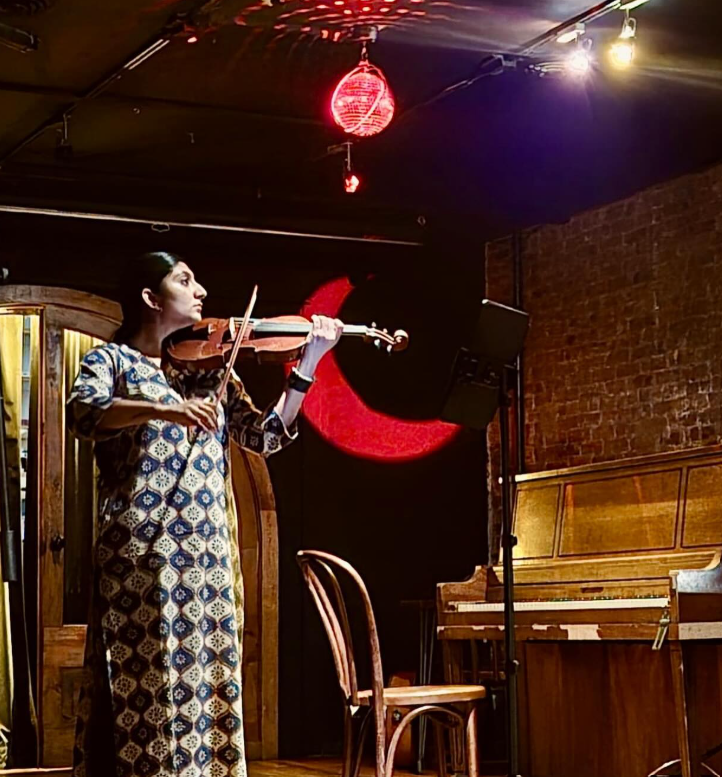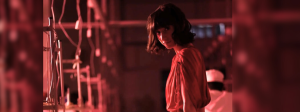At Mannes School of Music in New York City, the strains of a raga drifted through the air as the Indian-American violinist and composer Sathvi Ramaseshan began her graduation recital with an “alaap” in Puriya Kalyan, composed by a friend. For many in the audience, it was their first encounter with the emotive slow introduction of an Indian raga. For Sathvi, it was a moment of cultural convergence that defined not just the evening’s performance, but her very identity as an artist.
An emerging performer and composer, Sathvi is an artist with a unique blend of Western classical and South Indian Carnatic music, with a passion for cross-cultural musical storytelling.

A childhood tuned to two traditions
Born and raised in San Diego to a family of music lovers, Sathvi’s early world was steeped in the sounds of Carnatic music and Tamil film songs. Her passion for the violin emerged early, at just three years old, she begged her mother until she was enrolled at the San Diego Suzuki School of Music. The instrument became her voice before words could. By age 10, she was already playing with the San Diego Youth Symphony, rising to Assistant Principal Second Violin and later, Principal Second Violin.
Her training was rigorous and versatile. She studied under noted musicians like Pei-Chun Tsai and Zou Yu of the San Diego Symphony Orchestra, and Michael and Irina Tseitlin of the California Institute of Music. But Sathvi’s musical language was never going to be limited to the classical Western canon alone. Her roots pulled her toward a more expansive voice, one that could bridge cultures, styles, and even continents.
Building bridges through sound
Sathvi began composing music at 13, inspired by the desire to weave together her two worlds—Western classical precision and South Indian melodic expression. “As a queer South Asian instrumentalist and composer,” she explains, “I seek to create connection, vulnerability and comfort through my work. My instrument serves as a part of my voice to tell my story, a story spread across an entire ocean from the land of my ancestors, one of isolation, but ultimately one of joy and acceptance.”
Her works have since been performed by the Worcester Chamber Music Society and the San Diego Youth Symphony, attesting to her growing recognition. Whether composing chamber music or performing on stage, Sathvi brings a unique cultural syncretism to the spotlight. In her, the raga finds the sonata; the violin concerto converses with the alaap.
A rising talent
Sathvi has just completed her bachelors in violin performance and composition at the Mannes School of Music in New York City under the guidance of renowned violinist Austin Wulliman (of the Grammy-nominated JACK Quartet) and avant-garde composer Joan La Barbara. The vibrant artistic life of the city feeds her creative hunger, while her academic environment pushes her toward technical excellence.
She has graced some of NYC’s most prestigious stages like the Carnegie Hall, Lincoln Center, Klavierhaus, and the Francis Kite Club.
View this post on Instagram
Grounded in heritage, dressed in identity
Despite her classical training and cosmopolitan flair, Sathvi remains grounded in her roots. She loves visiting India, embraces traditional attire like saris, and celebrates the aesthetics of her culture. Her music becomes not just a stage performance but an articulation of her South Asian identity.
That sense of cultural pride also finds expression in family. A Father’s Day Instagram post from her dad offers a glimpse into their bond: “Today, I had a fabulous Father’s Day with Sathvi in New York City… The T-shirt I’m wearing is the same one I was wearing when I became a father. I only wear it on Father’s Day or her birthday.”
The road ahead
Sathvi Ramaseshan represents a generation of emerging artists who don’t see borders as barriers but as bridges. In an age where identity can be both complex and contested, her music creates space for queerness, for diaspora narratives, for dual heritage, and for experimentation. She’s not just playing violin; she’s telling stories in a universal language, and reimagining what it means to be Indian-American in the 21st century.


As Sathvi steps into the next chapter of her life post graduation, the notes she plays are as much about what has been as what is yet to come. Whether she’s composing for chamber orchestras or conjuring ragas on stage, Sathvi Ramaseshan is tuning a new harmony, one where every string, every silence, every crescendo tells a story worth listening to.
- Follow Sathvi Ramaseshan on Instagram
ALSO READ: Asmi Aderay: A new voice in emotion and expression, singer-songwriter trained at Berklee




